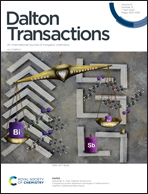Copper mesh supported nickel nanowire array as a catalyst for the hydrogen evolution reaction in high current density water electrolysis†
Abstract
Hydrogen generation by water splitting using various renewable energy sources will play an important role in the sustainable green energy supply of the future. Unfortunately, wide industrial adoption of this process is currently impeded by the necessity to use noble metal based electrolysis catalysts. In this study, a low-cost and highly efficient water electrolysis catalyst active in the hydrogen evolution reaction (HER) taking place in alkaline medium is developed. The catalyst preparation procedure consists of electrodeposition of a rough nickel layer onto a smooth copper mesh, followed by the growth of hierarchical Ni nanowires on its surface. The rough nickel layer provides plenty of active sites for nanowire formation, resulting in a synergetic effect between copper and nickel in the copper mesh supported nickel nanowire array, which effectively enhances the HER electrocatalytic performance of this novel material. The catalyst demonstrated an HER overpotential as low as 317 mV in 1 M KOH electrolyte at a current density of 1 A cm−2. The copper substrate's superior electrical conductivity to that of nickel is responsible for the excellent HER performance of the catalyst at high current density, making it a promising candidate to replace highly expensive noble metal based electrodes.



 Please wait while we load your content...
Please wait while we load your content...